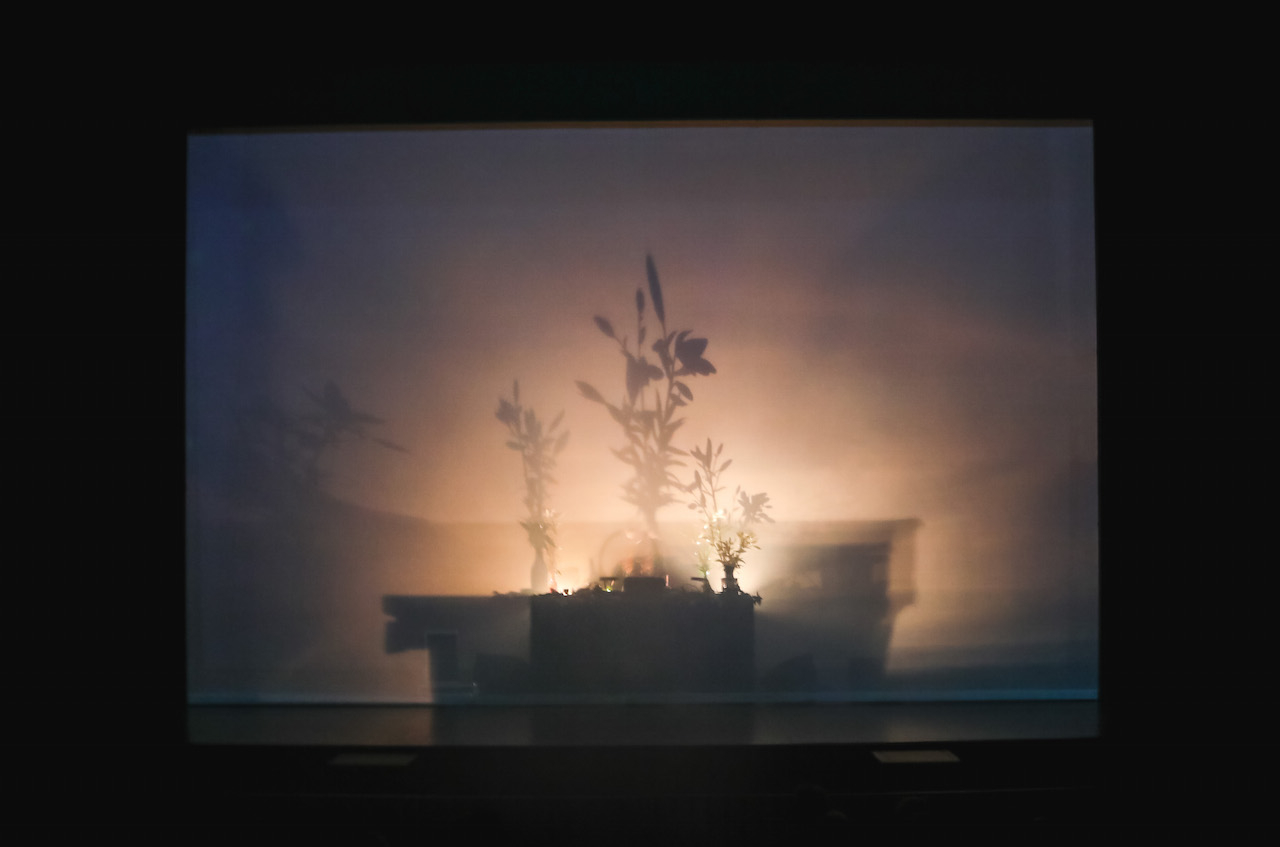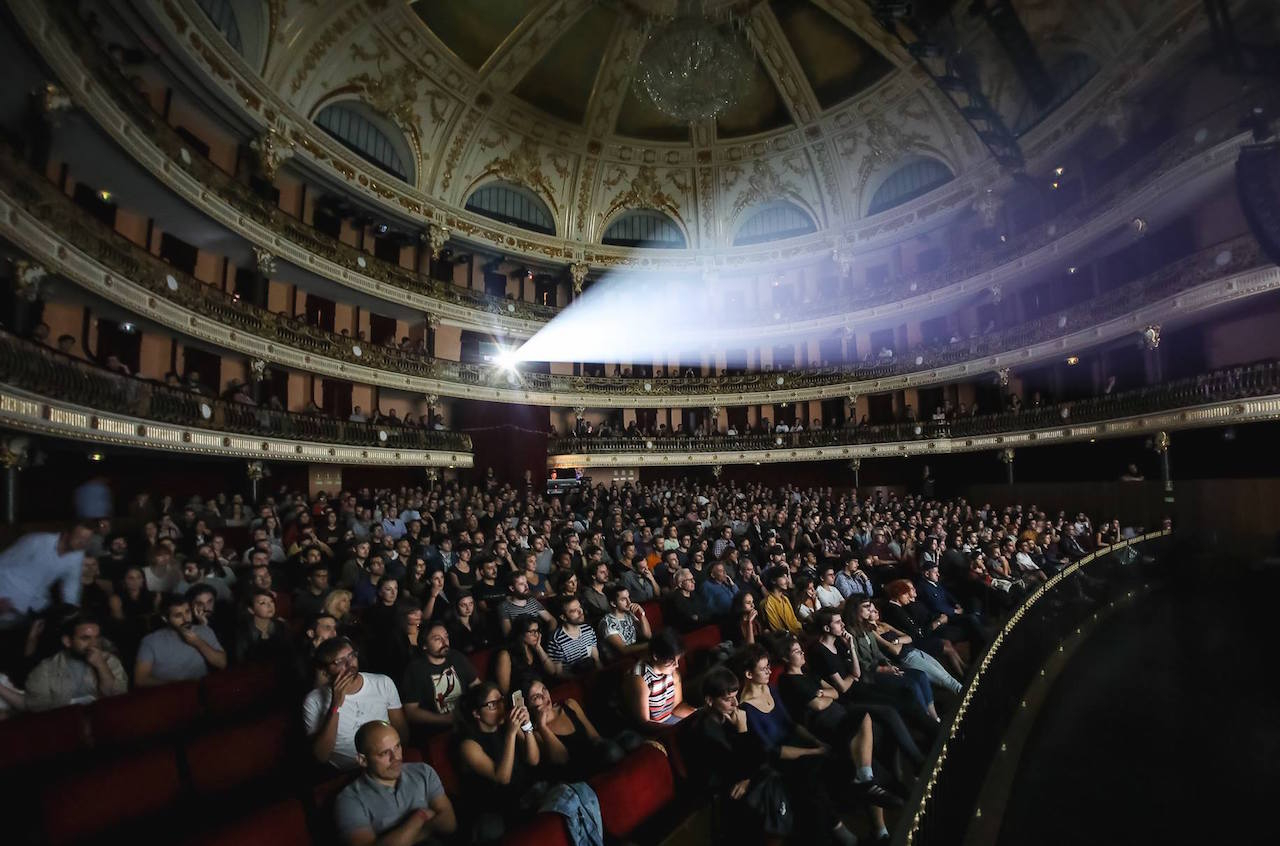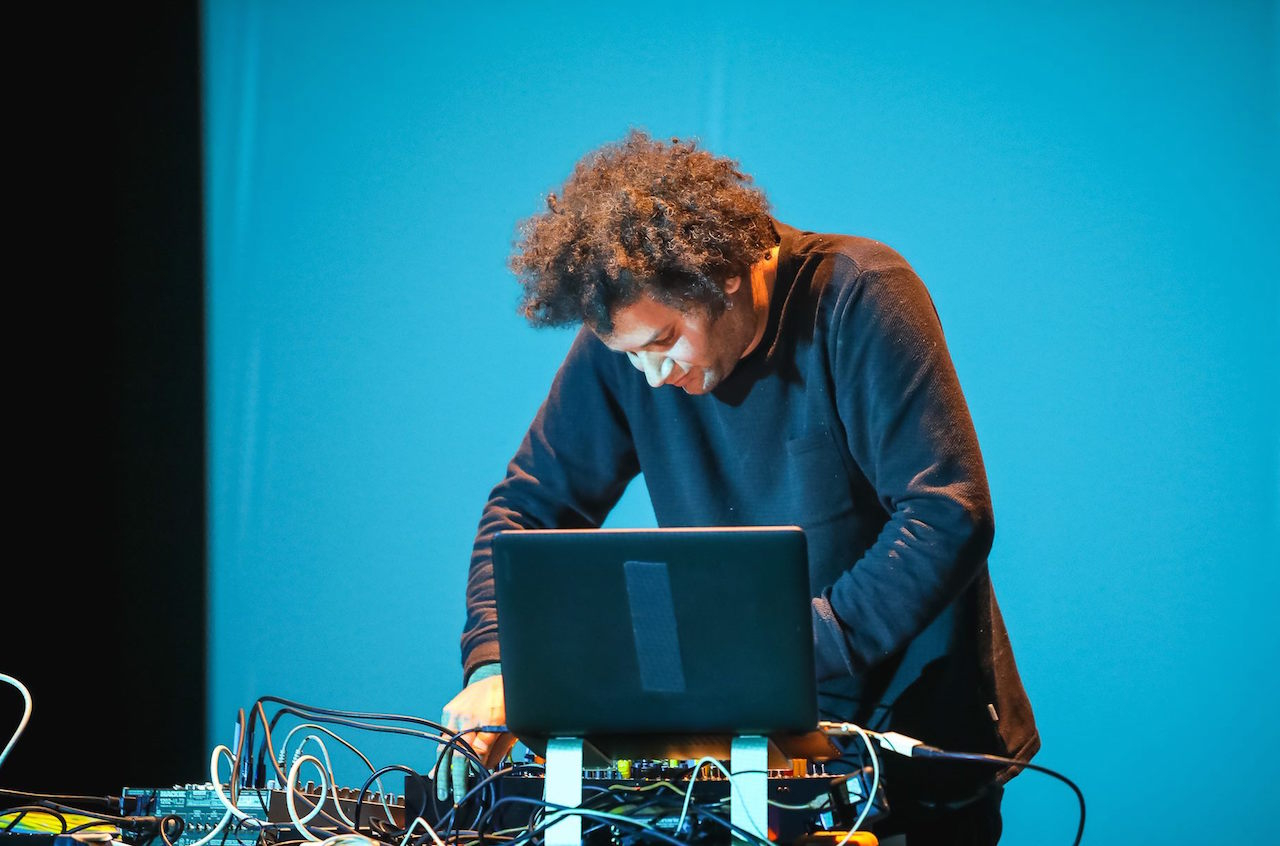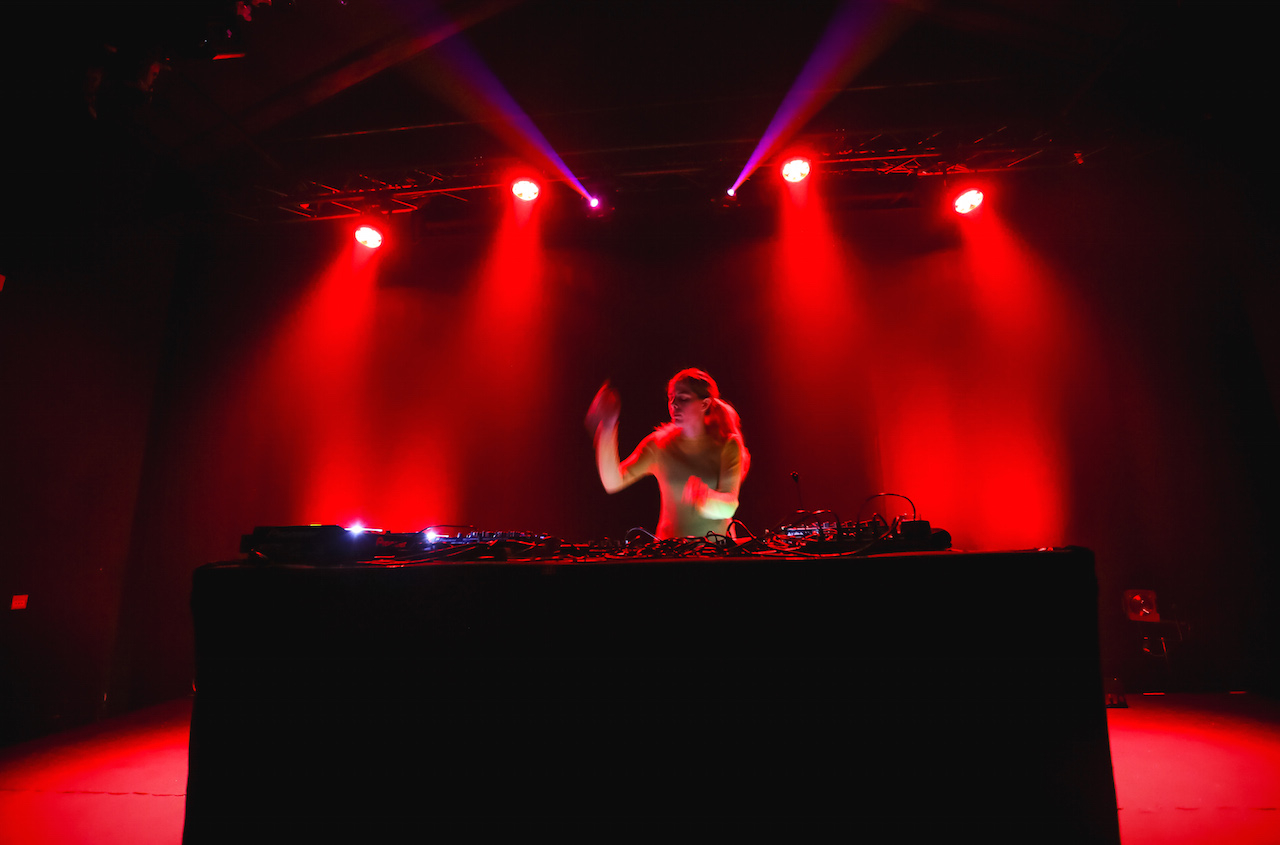- Braga is a sunny Portuguese city of churches and tiled facades, the kind of place where you can happily while away an afternoon walking around the town centre. For the past five years it's been home to music and visual arts festival Semibreve, which is no small achievement considering Braga is smaller and less touristy than Lisbon or Porto, with a population of less than 200,000. The crowds were largely Portuguese and the temperature was a whole 20 degrees warmer than my point of departure, Berlin. The festival makes the most of the city, using striking venues within comfortable walking distance of each other, while leisurely paced programming gives you plenty of time to take in the surroundings. There are few timetable clashes, and the overall number of bookings felt comprehensive without descending into the redundant overload of acts common at many other festivals. The music was mostly experimental and electronic, though also easily approachable, largely steering clear of the dark, masculine drone you might find at similar events.
The main performances took place at Theatro Circo, a lavish theatre built in 1915. At the opening on Friday evening, the space was plunged into complete darkness, signalling the beginning of a performance from Canadian composer Kara-Lis Coverdale and in-demand lighting artist MFO that would end up being one of my highlights of the weekend. Coverdale was veiled behind a large, translucent screen and backlit with soft lights that struck dramatic silhouettes, making a shadow play of her gestures. The stage design produced an air of anonymity—Coverdale later compared it to "performing in my bedroom." Understated lights traced patterns like constellations across the darkened backdrop before evolving into more organic textures, which at one point seemed to resemble the lurid mess of movement formed by millions of insects crawling atop each other.
The music, meanwhile, was exceptional. You could sense Coverdale searching out the contours of a sound for the first time, though they were arranged with startling intricacy and carefully structured. More often than not, she seemed to obscure her source material and would use some sounds to mimic others, making occasional emergences of naked harp or ecclesiastical tones like choirs and organs all the more affecting. The music was both solemn and brutal, complemented by the muted palette of the visuals. Despite being densely layered, the mix was balanced and dynamic and always seemed to have more power and surprise in reserve. It left an impression that stayed with me for days.
The following afternoon led me to another beautiful setting, a church known as Capela Imaculada Do Seminário Menor. The audience ranged from infants to the elderly, stylish youths to young families. A bell tolled and the musicians entered to perform compositions by Christina Vantzou. The composer was accompanied by a local string trio, who were supplemented by Vantzou's laptop and a small modular rig whose contributions to the music were subtle. The first piece had a steadily percolating drone and swelling string overtones, like the work of Ellen Fullman or Arnold Dreyblatt. It's the sort of music where things appear in the air that shouldn't be there, full of sounds too supernatural to come from such traditional instrumentation.
Later, I walked through the sunset back towards Theatro Circo, where Mortiz Von Oswald and Rashad Becker were to perform a piece running piano through a series of electronic processors. The piano had been prepared with objects like aluminum foil and what looked like cotton wool. Each key struck a different object, creating everything from rattling hisses to blunt, muffled tones. However, the piano was largely subsumed by Becker's distinctive style of synthesis. After a certain point, it became difficult to discern how they were interacting, as Becker launched off into uncanny approximations of non-existent lifeforms while Von Oswald kept supplying variations on a single chord. It was an interesting performance but it couldn't quite match the quality of the other sets in the theatre.
Before Semibreve, I'd not followed the solo work of former Battles member Tyondai Braxton (I was more familiar with his father's discography), but his performance made me seek out his recent recordings. His set stood out for its heavy rhythms, and for being one of the only playful performances of the weekend. But for all its forward-moving joie de vivre, Braxton also delivered disquieting, abstract passages with equal aplomb. Unfortunately, his equipment malfunctioned, cutting his set short.
It was another short and beautiful walk to a venue called GNRation, which hosted looser, late-night sets from Andy Stott, Nidia Minaj, Ron Morelli and Laurel Halo after the theatre programming finished. Halo, on Sunday morning, was my pick of the bunch. She patiently built a rhythm-heavy atmosphere, avoiding obvious pay-offs in favour of a more articulate style. After 30 minutes, she suddenly plunged the room into a proper Detroit techno workout, replete with classic string pads and a 4/4 kick that was all the more impactful for having been held at bay for so long.
I returned to the theatre on Sunday evening for the festival's finale, a performance by sound artist and Subtext affiliate Paul Jebanasam, AKA Jabba, and Tarik Barri, a video artist who's worked with Monolake and Radiohead's Thom Yorke in the past. Barri's custom-built software led to the strongest correlation between sound and image of the whole weekend. It looked (and sounded) like we were flying at warp speed through a fiery thunderstorm of volcanic ash. Huge, clashing sheets of sound cracked and sizzled but the sonic violence was offset by moments of calming harmonic progressions and near-silence. The visuals were strengthened by their repeated, fleeting absence—a simple but effective means of resetting the audience's attention that isn't often used. The contrast between silence and extreme volume, light and dark, was explored in the latter parts of the performance. Gigantic impacts more akin to video game or film sound design boomed out of the speakers in sync with strobing flashes that sent the senses flinching. It was the most enveloping performance of the weekend; afterwards, I walked out into the evening air in a daze. Semibreve, with its thought-provoking programming, beautiful surroundings and friendly, local crowd, is a festival flying way too far under the radar.
Photo credit /
Adriano Ferreira Borges

 Before Semibreve, I'd not followed the solo work of former Battles member Tyondai Braxton (I was more familiar with his father's discography), but his performance made me seek out his recent recordings. His set stood out for its heavy rhythms, and for being one of the only playful performances of the weekend. But for all its forward-moving joie de vivre, Braxton also delivered disquieting, abstract passages with equal aplomb. Unfortunately, his equipment malfunctioned, cutting his set short. It was another short and beautiful walk to a venue called GNRation, which hosted looser, late-night sets from Andy Stott, Nidia Minaj, Ron Morelli and Laurel Halo after the theatre programming finished. Halo, on Sunday morning, was my pick of the bunch. She patiently built a rhythm-heavy atmosphere, avoiding obvious pay-offs in favour of a more articulate style. After 30 minutes, she suddenly plunged the room into a proper Detroit techno workout, replete with classic string pads and a 4/4 kick that was all the more impactful for having been held at bay for so long.
Before Semibreve, I'd not followed the solo work of former Battles member Tyondai Braxton (I was more familiar with his father's discography), but his performance made me seek out his recent recordings. His set stood out for its heavy rhythms, and for being one of the only playful performances of the weekend. But for all its forward-moving joie de vivre, Braxton also delivered disquieting, abstract passages with equal aplomb. Unfortunately, his equipment malfunctioned, cutting his set short. It was another short and beautiful walk to a venue called GNRation, which hosted looser, late-night sets from Andy Stott, Nidia Minaj, Ron Morelli and Laurel Halo after the theatre programming finished. Halo, on Sunday morning, was my pick of the bunch. She patiently built a rhythm-heavy atmosphere, avoiding obvious pay-offs in favour of a more articulate style. After 30 minutes, she suddenly plunged the room into a proper Detroit techno workout, replete with classic string pads and a 4/4 kick that was all the more impactful for having been held at bay for so long. I returned to the theatre on Sunday evening for the festival's finale, a performance by sound artist and Subtext affiliate Paul Jebanasam, AKA Jabba, and Tarik Barri, a video artist who's worked with Monolake and Radiohead's Thom Yorke in the past. Barri's custom-built software led to the strongest correlation between sound and image of the whole weekend. It looked (and sounded) like we were flying at warp speed through a fiery thunderstorm of volcanic ash. Huge, clashing sheets of sound cracked and sizzled but the sonic violence was offset by moments of calming harmonic progressions and near-silence. The visuals were strengthened by their repeated, fleeting absence—a simple but effective means of resetting the audience's attention that isn't often used. The contrast between silence and extreme volume, light and dark, was explored in the latter parts of the performance. Gigantic impacts more akin to video game or film sound design boomed out of the speakers in sync with strobing flashes that sent the senses flinching. It was the most enveloping performance of the weekend; afterwards, I walked out into the evening air in a daze. Semibreve, with its thought-provoking programming, beautiful surroundings and friendly, local crowd, is a festival flying way too far under the radar. Photo credit / Adriano Ferreira Borges
I returned to the theatre on Sunday evening for the festival's finale, a performance by sound artist and Subtext affiliate Paul Jebanasam, AKA Jabba, and Tarik Barri, a video artist who's worked with Monolake and Radiohead's Thom Yorke in the past. Barri's custom-built software led to the strongest correlation between sound and image of the whole weekend. It looked (and sounded) like we were flying at warp speed through a fiery thunderstorm of volcanic ash. Huge, clashing sheets of sound cracked and sizzled but the sonic violence was offset by moments of calming harmonic progressions and near-silence. The visuals were strengthened by their repeated, fleeting absence—a simple but effective means of resetting the audience's attention that isn't often used. The contrast between silence and extreme volume, light and dark, was explored in the latter parts of the performance. Gigantic impacts more akin to video game or film sound design boomed out of the speakers in sync with strobing flashes that sent the senses flinching. It was the most enveloping performance of the weekend; afterwards, I walked out into the evening air in a daze. Semibreve, with its thought-provoking programming, beautiful surroundings and friendly, local crowd, is a festival flying way too far under the radar. Photo credit / Adriano Ferreira Borges